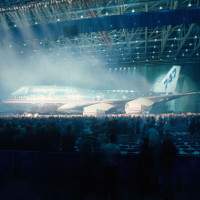Here are the basics of DAB – Digital Audio Broadcasting, a form of radio technology being used in some countries…
DAB Digital Radio, also known as digital audio broadcasting, is a completely new system for broadcasting and receiving stations.
As the name suggests, the signal is broadcast in a digital format that allows CD quality to be achieved. People who have listened to DAB digital radio have commented on the significantly better sound quality and “presence” of the new radio system. In addition it does not suffer from the multi-effects commonly experienced on FM transmission and is a system that uses what it is called a single frequency network (SFN) with no retuning required when moving from one coverage area to another. next wave.
In addition to many of these new services that can be implemented on digital radio transmissions, new systems can be adapted to suit the 21st century. Digital radio signals carry data along with sound, and This allows text and images to be transmitted along with sound to enhance the listening experience. In this way, it is possible to transmit the title of a song, and a photo of the artist while some music is being transmitted. It is also possible to have scrolling news on the bottom of the screen used on the radio.

This is a completely new system for broadcasters and receivers.
DAB digital radio is now well established in many countries around the world from the UK and Europe to Canada, Australia and many others.
To produce a digital system that works satisfactorily under the conditions necessary for digital broadcasting a large amount of work has been done in the development phase. Several current digital techniques have been studied but it has realized significant limitations for this application.
One of the main problems is that many receivers will use non-directional antennas and as a result they will receive reflected signals. These will be delayed enough for the faulty data. Also the bandwidth required to adapt to a full stereo signal would need to be reduced to ensure efficient use of the spectrum. OLD
Technical standards for digital radio were developed under the auspices of the European Eureka Project 147. The consortium includes manufacturers, research broadcasters and network operator bodies. .
There are two main areas of system interest in digital broadcasting: modulation systems and digital audio encoding and compression systems.
The encryption and compression system is very important. For the system to be able to grow the data rate has been significantly reduced compared to the standard CD. The digital radio system adopted reduced data rates to 128 kbits/sec, one-sixth of the bit rate for the same quality as an encoded linear signal. In order to achieve these reductions the input audio signal is carefully analyzed. It is found that the ear has a certain threshold of hearing. Below is the signal not being listened to.
Also if a strong sound is presented on a sound frequency then weak near it may not be heard because the hearing threshold is modified. By analyzing the incoming sound and coding only those components that the ear will hear a significant reduction can be made. Further reduction in data rates can be achieved by reducing the audio bandwidth. This is done on some channels such as those used only for speech.

